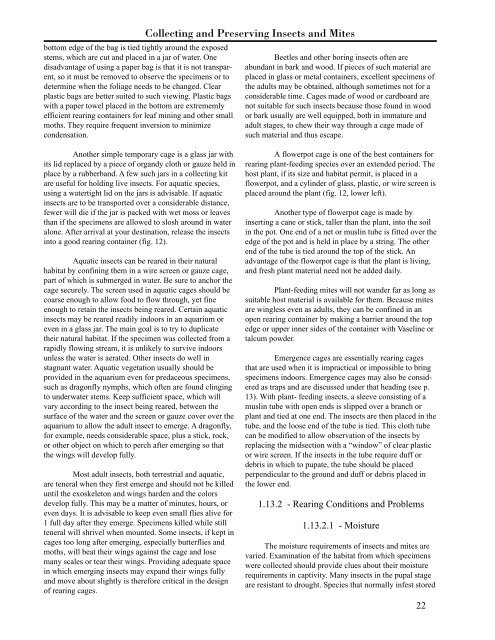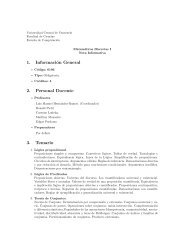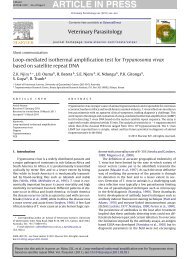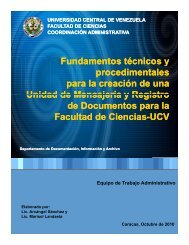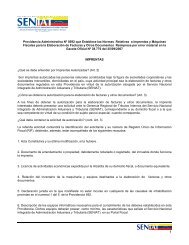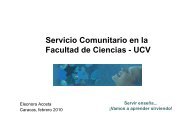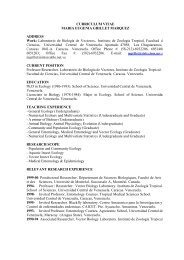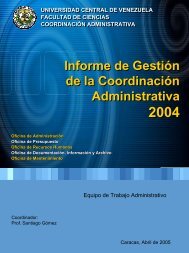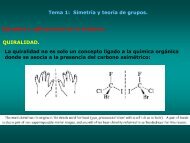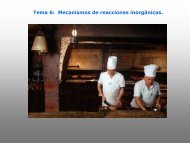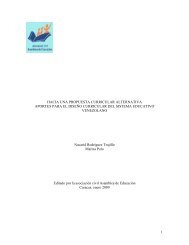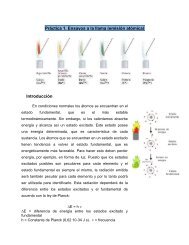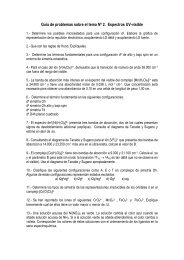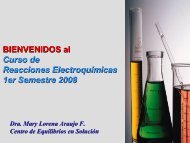Collecting and Preserving
Collecting and Preserving
Collecting and Preserving
- No tags were found...
You also want an ePaper? Increase the reach of your titles
YUMPU automatically turns print PDFs into web optimized ePapers that Google loves.
ottom edge of the bag is tied tightly around the exposedstems, which are cut <strong>and</strong> placed in a jar of water. Onedisadvantage of using a paper bag is that it is not transparent,so it must be removed to observe the specimens or todetermine when the foliage needs to be changed. Clearplastic bags are better suited to such viewing. Plastic bagswith a paper towel placed in the bottom are extrememlyefficient rearing containers for leaf mining <strong>and</strong> other smallmoths. They require frequent inversion to minimizecondensation.<strong>Collecting</strong> <strong>and</strong> <strong>Preserving</strong> Insects <strong>and</strong> MitesBeetles <strong>and</strong> other boring insects often areabundant in bark <strong>and</strong> wood. If pieces of such material areplaced in glass or metal containers, excellent specimens ofthe adults may be obtained, although sometimes not for aconsiderable time. Cages made of wood or cardboard arenot suitable for such insects because those found in woodor bark usually are well equipped, both in immature <strong>and</strong>adult stages, to chew their way through a cage made ofsuch material <strong>and</strong> thus escape.Another simple temporary cage is a glass jar withits lid replaced by a piece of org<strong>and</strong>y cloth or gauze held inplace by a rubberb<strong>and</strong>. A few such jars in a collecting kitare useful for holding live insects. For aquatic species,using a watertight lid on the jars is advisable. If aquaticinsects are to be transported over a considerable distance,fewer will die if the jar is packed with wet moss or leavesthan if the specimens are allowed to slosh around in wateralone. After arrival at your destination, release the insectsinto a good rearing container (fig. 12).Aquatic insects can be reared in their naturalhabitat by confining them in a wire screen or gauze cage,part of which is submerged in water. Be sure to anchor thecage securely. The screen used in aquatic cages should becoarse enough to allow food to flow through, yet fineenough to retain the insects being reared. Certain aquaticinsects may be reared readily indoors in an aquarium oreven in a glass jar. The main goal is to try to duplicatetheir natural habitat. If the specimen was collected from arapidly flowing stream, it is unlikely to survive indoorsunless the water is aerated. Other insects do well instagnant water. Aquatic vegetation usually should beprovided in the aquarium even for predaceous specimens,such as dragonfly nymphs, which often are found clingingto underwater stems. Keep sufficient space, which willvary according to the insect being reared, between thesurface of the water <strong>and</strong> the screen or gauze cover over theaquarium to allow the adult insect to emerge. A dragonfly,for example, needs considerable space, plus a stick, rock,or other object on which to perch after emerging so thatthe wings will develop fully.Most adult insects, both terrestrial <strong>and</strong> aquatic,are teneral when they first emerge <strong>and</strong> should not be killeduntil the exoskeleton <strong>and</strong> wings harden <strong>and</strong> the colorsdevelop fully. This may be a matter of minutes, hours, oreven days. It is advisable to keep even small flies alive for1 full day after they emerge. Specimens killed while stillteneral will shrivel when mounted. Some insects, if kept incages too long after emerging, especially butterflies <strong>and</strong>moths, will beat their wings against the cage <strong>and</strong> losemany scales or tear their wings. Providing adequate spacein which emerging insects may exp<strong>and</strong> their wings fully<strong>and</strong> move about slightly is therefore critical in the designof rearing cages.A flowerpot cage is one of the best containers forrearing plant-feeding species over an extended period. Thehost plant, if its size <strong>and</strong> habitat permit, is placed in aflowerpot, <strong>and</strong> a cylinder of glass, plastic, or wire screen isplaced around the plant (fig. 12, lower left).Another type of flowerpot cage is made byinserting a cane or stick, taller than the plant, into the soilin the pot. One end of a net or muslin tube is fitted over theedge of the pot <strong>and</strong> is held in place by a string. The otherend of the tube is tied around the top of the stick. Anadvantage of the flowerpot cage is that the plant is living,<strong>and</strong> fresh plant material need not be added daily.Plant-feeding mites will not w<strong>and</strong>er far as long assuitable host material is available for them. Because mitesare wingless even as adults, they can be confined in anopen rearing container by making a barrier around the topedge or upper inner sides of the container with Vaseline ortalcum powder.Emergence cages are essentially rearing cagesthat are used when it is impractical or impossible to bringspecimens indoors. Emergence cages may also be consideredas traps <strong>and</strong> are discussed under that heading (see p.13). With plant- feeding insects, a sleeve consisting of amuslin tube with open ends is slipped over a branch orplant <strong>and</strong> tied at one end. The insects are then placed in thetube, <strong>and</strong> the loose end of the tube is tied. This cloth tubecan be modified to allow observation of the insects byreplacing the midsection with a “window” of clear plasticor wire screen. If the insects in the tube require duff ordebris in which to pupate, the tube should be placedperpendicular to the ground <strong>and</strong> duff or debris placed inthe lower end.1.13.2 - Rearing Conditions <strong>and</strong> Problems1.13.2.1 - MoistureThe moisture requirements of insects <strong>and</strong> mites arevaried. Examination of the habitat from which specimenswere collected should provide clues about their moisturerequirements in captivity. Many insects in the pupal stageare resistant to drought. Species that normally infest stored22


